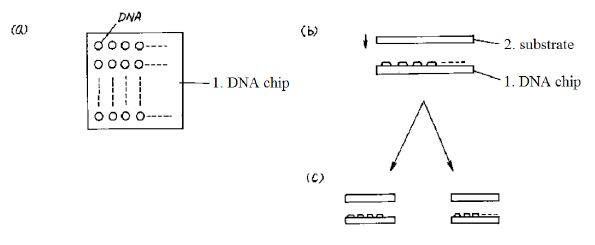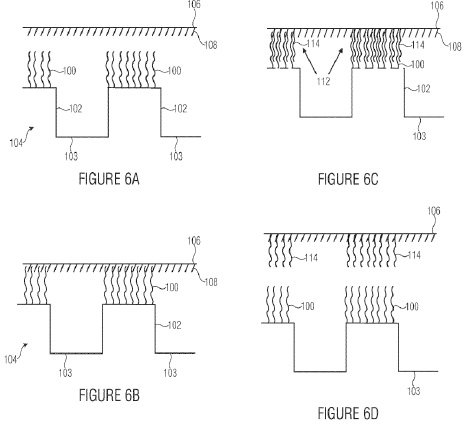- KAWAGUTI & PARTNERS Home>
- News Letter>
- April, 2018
K&P’sIntellectual Property High Court Decision Report in 2018
April, 2018
Updated 1 OCT 2018
1. Is the Claimed Feature Feasibly Disclosed in the Prior Art?
Albert-Ludwigs-Universitaet Freiburg v. Commissioner of JPO, Case No. 2017 (Gyo-Ke) 10010 (Decision rendered on April 26, 2018)
The Applicant, Albert-Ludwigs-Universitaet Freiburg (ALUF), filed a patent application relating to a method of producing a replicate or derivative of an array of molecules in 2010. However, the application was finally rejected in 2016 by the Board of Appeals of the JPO on the grounds of lack of inventive step. Against the JPO's decision, ALUF filed a cancellation action with the IPHC in 2017.
Claim 1 of the ALUF’s patent application at issue recites as follows:
1. A method of producing a replicate or derivative of an array of biomolecules selected from the group consisting of DNA, cDNA, modified DNA, RNA, mRNA, tRNA, or siRNA, or synthetically produced chemical molecules (16; 32; 50), the array comprising a spatial arrangement of separate samples of molecules (16; 32; 50), the method comprising:
creating, for each sample, at least one spatially limited effective area (24; 35; 54') which is separate from the effective areas of the other samples (24; 35; 54), wherein the effective area (24; 35; 54) has a function of separating from the effective areas of the other samples, and the effective area (24; 35; 54') comprises a spatially limited amplifying agent area, contacts with a surface, provided with a binding adapter (22; 38; 62) or binding properties, of a carrier (20; 34; 60), and is formed by a spatially closed cavity, electrical or magnetic fields, hydrophobic/hydrophilic areas, a phase boundary between a fluid and a gas, and/or a phase boundary between liquids of different levels of viscosity,
amplifying the molecules (16; 32; 50) by means of amplifying agents in the effective areas (24; 35; 54') for creating replicates (18; 32; 64), or creating derivatives of the samples in the effective areas (24; 35; 54'), wherein the derivatives are selected from the group consisting of DNA, cDNA, RNA or a protein, said RNA being transcribed from DNA and/or said protein being produced based on the biological information of RNA,
binding the replicates or derivatives (18; 32; 64) of the samples to the carrier (20; 34; 60) by means of the binding adapter or the binding properties (22; 38; 62), so that a spatial arrangement of the replicates or derivatives of the samples on the carrier corresponds to the spatial arrangement of the samples in the array, wherein the process of binding the replicates or derivatives to the carrier is performed simultaneously with the amplification or the creation of the derivatives, and
removing the carrier (20; 34; 60) comprising the replicates or derivatives (18; 32; 64) of the samples from the array.
Claim 1 at issue relates to a method of producing a replicate or derivative of an array of biomolecules or synthetically produced chemical molecules. In comparison with the prior art, one of the characteristic features of the method is that the process of binding the replicates to the carrier and the process of amplification are performed simultaneously.
On the other hand, the closest prior art, D1 (JP2001/000183 A), describes a device for producing a DNA chip, said device comprising a means for PCR amplifying DNAs that have been previously spotted on a base substrate (1) and a means for transferring the amplified DNAs to a transfer substrate (2) by direct contact while keeping the mutual position of each cell as illustrated below.

D1 further teaches that PCR may be performed in a state in which the base substrate (1) and the transfer substrate (2) are bonded to each other. The Board of Appeals of the JPO concluded that claim 1 at issue was obvious over D1 since if PCR is performed in a state in which the base substrate (1) and the transfer substrate (2) are bonded to each other, the amplified DNAs would naturally transfer to the transfer substrate (2) simultaneously with the amplification of DNAs.
Against the JPO's decision, the plaintiff ALUF asserted that the simultaneous implementation of DNA amplification and transfer (binding) was not taught or even suggested in D1. In particular, ALUF emphasized that D1 was silent about how the amplified DNAs were bound to the carrier during PCR. Further, in response to the defendant's (Commissioner of JPO) assertion that using an electrostatic force was well known at the time of filing for binding amplified DNAs to the carrier, ALUF contended that if PCR was performed in a state in which the substrate was bound to the carrier engineered to have a positively-charged surface, not only amplified DNAs but also primers and target nucleic acids in a reaction mixture must have been diffused and bound to the carrier in a nonspecific and omnidirectional manner, and as a result, due to the depletion of a sufficient amount of primers and target nucleic acids required for PCR, no DNA replicate could have been produced thereafter. In addition, since the primer is a small DNA and thus diffuses faster than other molecules, it would efficiently and excessively bind to and cover the positively-charged surface of the carrier and, as a result, the amplified DNA could not be transferred (bound) to the carrier thereafter.
However, the IPHC did not accept the ALUF's assertions. The Court found that it was a well-known technique to prepare a DNA microarray by electrostatically binding amplified DNAs to the positively-charged surface of a solid-phase support. Even if primers preferentially and electrostatically bind to the carrier and cover the surface thereof as alleged by ALUF, there is no specific evidence to admit that the surface is completely coated with the primers so that the amplified DNAs are completely prevented from binding to the carrier, or the primers are completely exhausted in a reaction mixture. Thus, the simultaneous implementation of DNA amplification and transfer (binding) of the amplified DNAs to the carrier is feasible by means of an electrostatic binding in the embodiment of D1 where PCR amplification is performed in a state in which the base substrate (1) and the transfer substrate (2) are bonded to each other. The plaintiff's allegations are thus not acceptable.
Conclusively, the IPHC dismissed the ALUF’s appeal, and upheld the JPO’s decision.
An appeal to the Supreme Court was NOT filed against this decision, and thus the decision is final and binding.
K&P’s Comments In this dispute, whether the claimed feature is feasibly disclosed in the prior art was discussed. The plaintiff ALUF asserted that one of the characteristic features of claim 1 at issue, namely, the simultaneous implementation of DNA amplification and transfer (binding) of the amplified DNAs to the carrier was not feasibly disclosed in D1. However, the IPHC concluded that the feature was feasibly disclosed and thus claim 1 failed to involve an inventive step. This might be of help to understand how the IPHC considers such a very technical issue.
Incidentally, this conclusion may be attributed, at least partially, to the broad scope of claims not commensurate with the arguments submitted by the plaintiff. The description of the patent at issue provides a specific embodiment especially suitable for the simultaneous implementation of DNA replication and transfer of the amplified DNAs to the carrier in Figs. 6A to 6D.

In this embodiment, "solid-phase primers" are used as the binding adapters 108. Due to the spatial vicinity of the array substrate 104 and of the carrier 106, spatially limited effective areas arise (Fig. 6B). In the effective areas, the contact between the solid-phase primers 108 and the samples 100 enables hybridizing, so that amplification may start (Fig. 6C). In this embodiment, the DNA replication (i.e., synthesis of replicates 114) and transfer of the replicates to the carrier 106 are completely simultaneous. This embodiment is apparently not taught or suggested by D1. In fact, ALUF referred to the embodiment and argued some advantageous effects to establish an inventive step.
However, claim 1 at issue does not limit the scope only to this embodiment. Claim 1 at issue defines the surface of the carrier to be provided with not only a binding adapter (e.g., a solid-phase primer as shown in Fig. 6) but also binding properties including electrostatic properties. The IPHC thus disregarded the ALUF's arguments based on this embodiment. Needless to say, it is important that you should submit arguments commensurate with the scope of claims in establishing an inventive step of the invention.
In April 2018, the IPHC handed down 15 decisions including the above case on patent, and overturned the previous decisions in 3 cases.
In April 2018, the IPHC handed down 4 decisions on trademark, and maintained all of the previous decisions.
In April 2018, the IPHC handed down 1 decision on industrial design, which maintained the previous decision.
Additionally, we have now confirmed that appeals to the Supreme Court against the decisions on 2016 (Gyo-Ke) 10106 (Philip Morris Products S.A. v. Commissioner of JPO), which we introduced in the K&P’s IPHC Decision Report in April, 2017; 2016 (Gyo-Ke) 10146 (X (Individual) v. Seattle Genetics, Inc.), which we introduced in the K&P’s IPHC Decision Report in July, 2017; 2016 (Gyo-Ke) 10056 (Mitsubishi Chemical Corp., Mitsubishi-Chemical Foods Corp. v. Riken Vitamin Co., Ltd.), which we introduced in the K&P’s IPHC Decision Report in September, 2017; and 2017 (Gyo-Ke) 10121 (Senju Metal Industry Co., Ltd. v. Harima Chemicals, Inc.), which we introduced in the K&P’s IPHC Decision Report in February, 2018, were dismissed.



